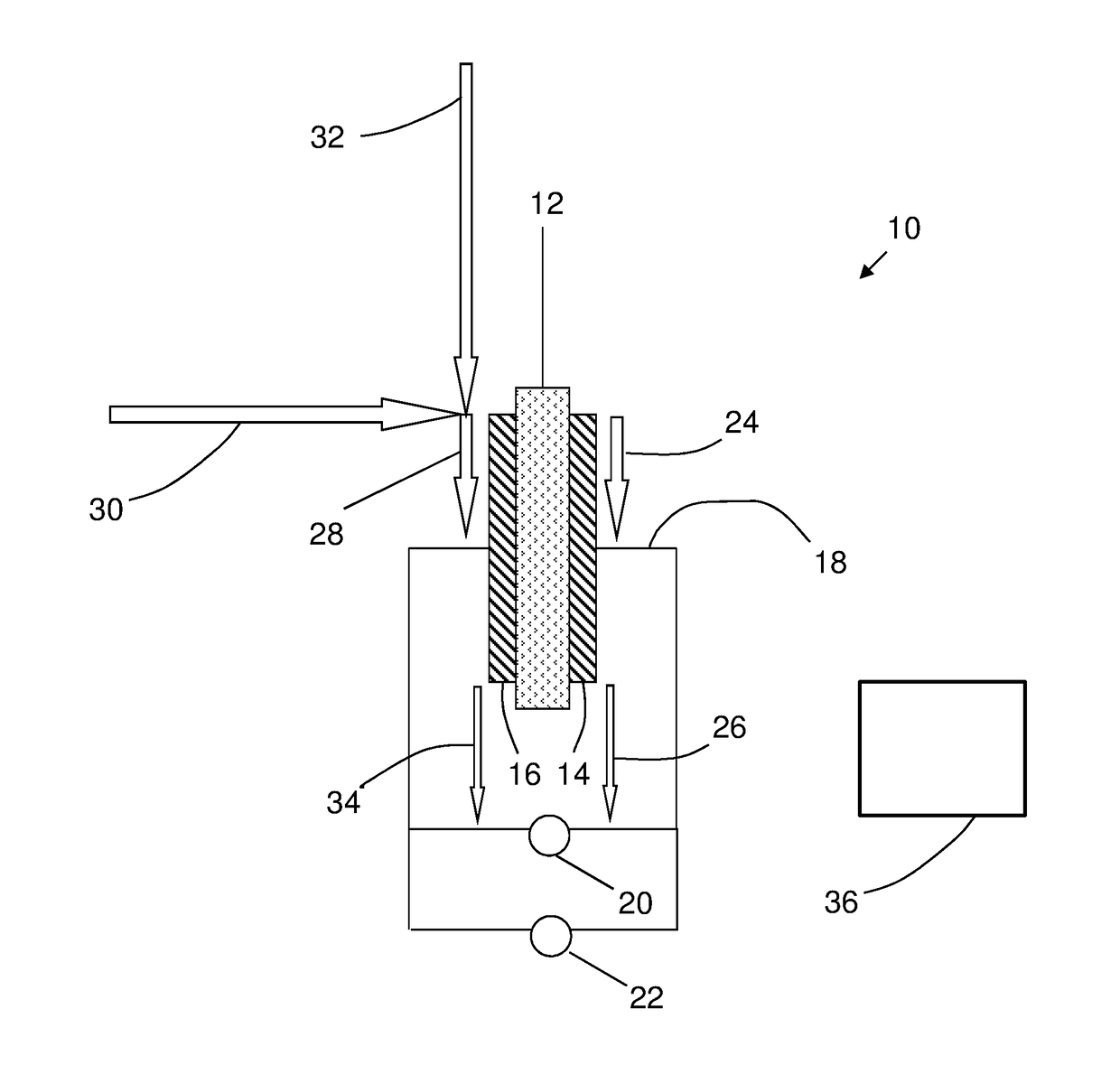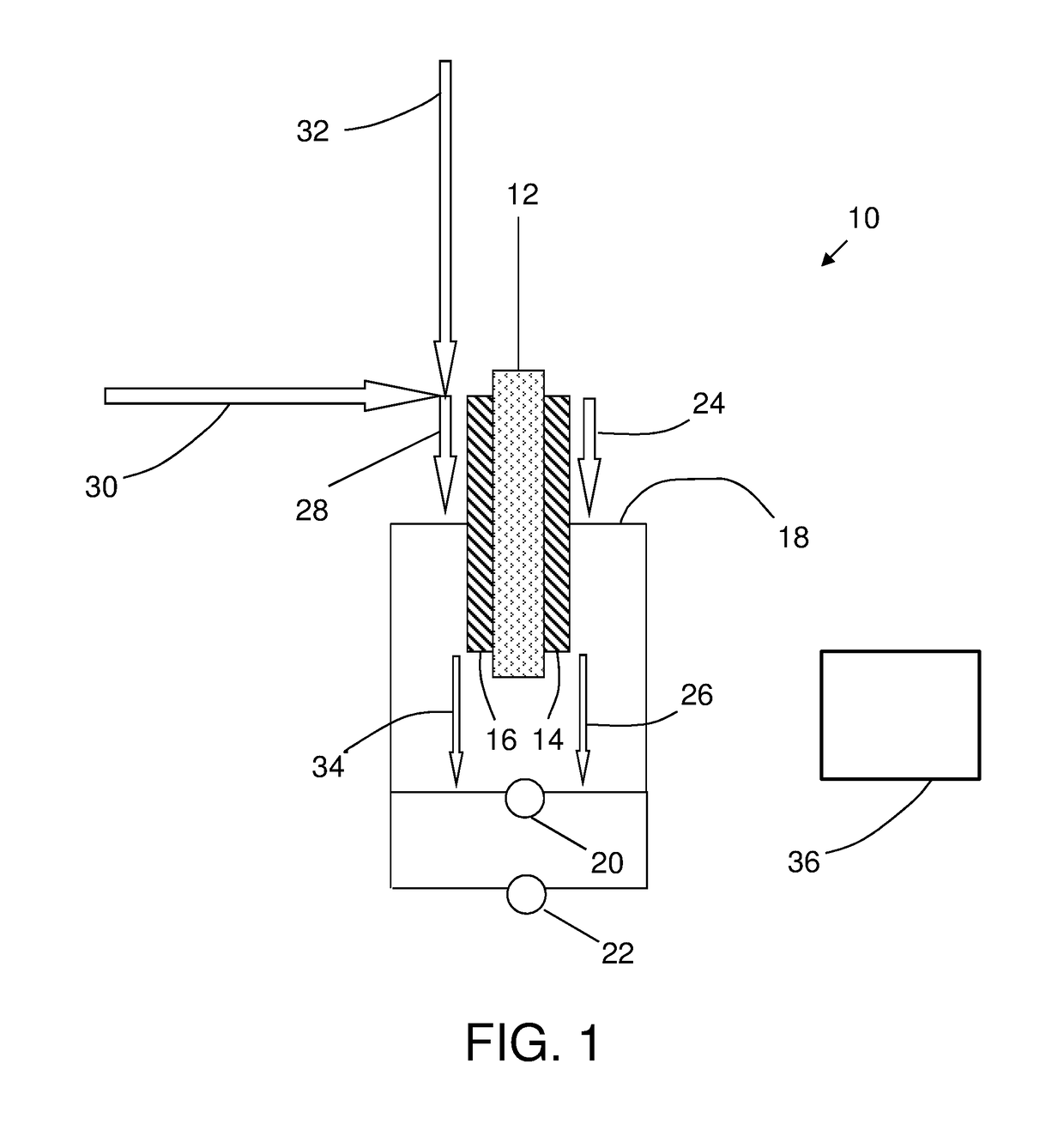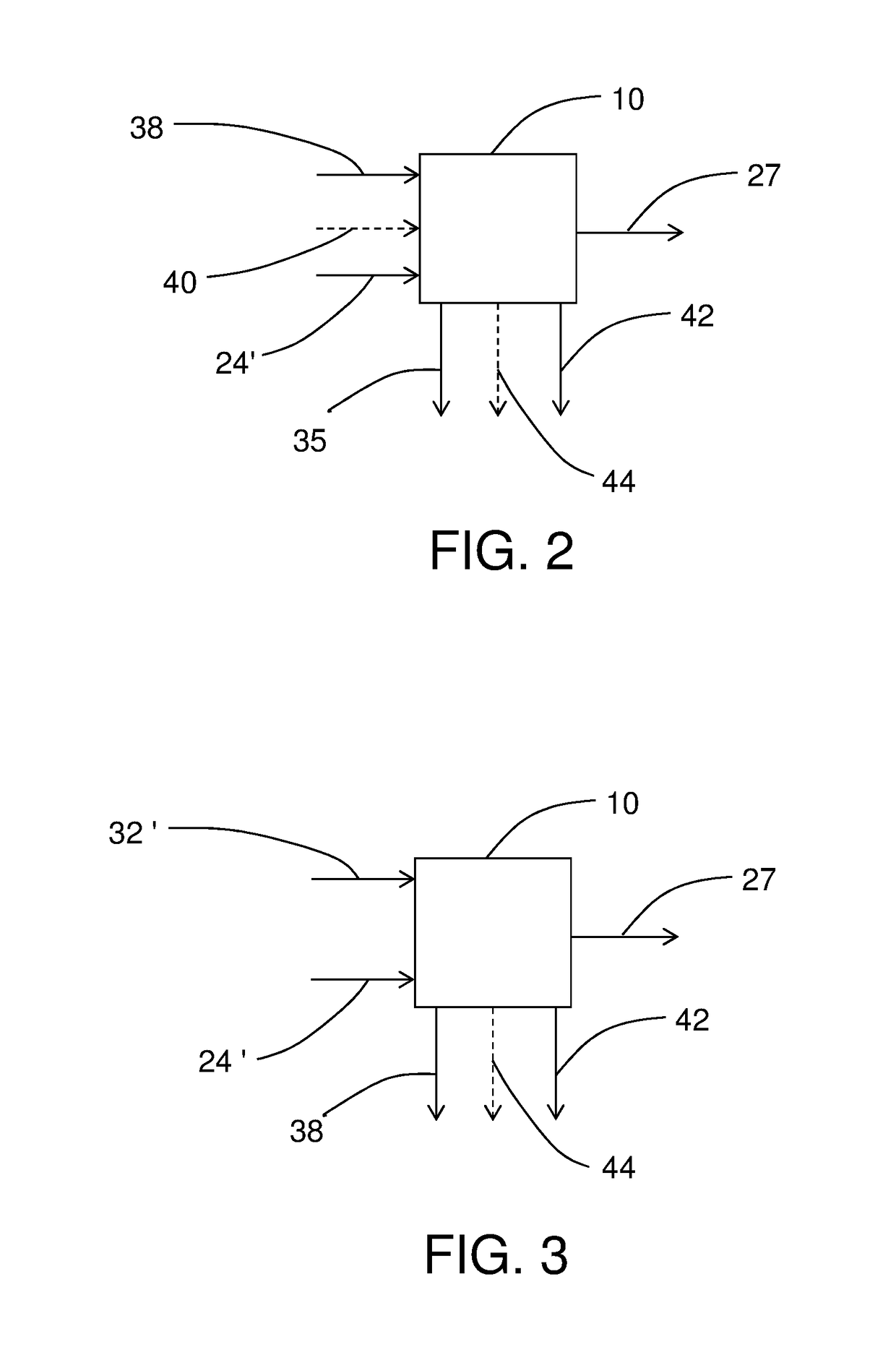On-board aircraft electrochemical system
- Summary
- Abstract
- Description
- Claims
- Application Information
AI Technical Summary
Benefits of technology
Problems solved by technology
Method used
Image
Examples
Embodiment Construction
[0014]Referring now to the Figures, in which the same numbering may be used in more than one Figure to represent the same feature without the necessity of explicit repetition of the description for each Figure, FIG. 1 schematically depicts an electrochemical cell 10. The electrochemical cell 10 comprises an electrolyte 12 having a cathode 14 disposed on one side and an anode 16 disposed on the other side. Cathode 14 and anode 16 are positioned adjacent to, and preferably in contact with the electrolyte 12 and can be solid metal layers deposited (e.g., by vapor deposition) onto the electrolyte 12, or can have structures comprising discrete catalytic particles adsorbed onto a porous substrate that is attached to the electrolyte 12. Alternatively, the catalyst particles can be deposited on high surface area powder materials (e.g., graphite or porous carbons or metal-oxide particles) and then these supported catalysts may be deposited directly onto the electrolyte 12 or onto a porous su...
PUM
 Login to View More
Login to View More Abstract
Description
Claims
Application Information
 Login to View More
Login to View More - R&D
- Intellectual Property
- Life Sciences
- Materials
- Tech Scout
- Unparalleled Data Quality
- Higher Quality Content
- 60% Fewer Hallucinations
Browse by: Latest US Patents, China's latest patents, Technical Efficacy Thesaurus, Application Domain, Technology Topic, Popular Technical Reports.
© 2025 PatSnap. All rights reserved.Legal|Privacy policy|Modern Slavery Act Transparency Statement|Sitemap|About US| Contact US: help@patsnap.com



